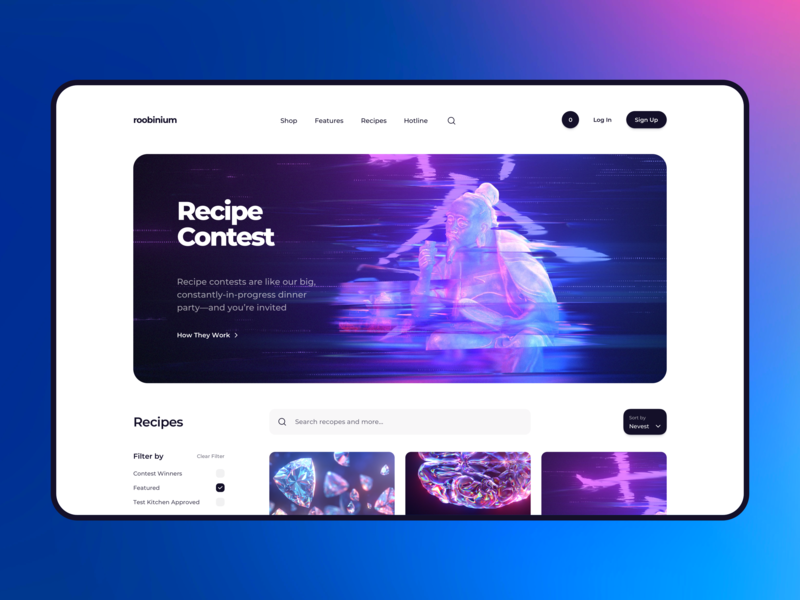
Research on web design can be useful; however, it can be time-consuming. There is a lot of information out there, but not all of it is correct or easy to understand. So check out the great tips that we have gathered here and you’ll be quite pleased with what you find.
You should always be on the lookout for new information from various forums that can help you learn how to start out, or gain more knowledge with web design. Use your preferred search engine to get sound information that will help you learn for free.
Include a search element that allows visitors to search within your website content. If visitors want something specific, they will immediately scan for a search function. If your site is not equipped with one, visitors may go to an alternate site. Place it near the page’s top right corner since this is one of the first places people usually look for them.
You have access to a number of different programs to help you do this. These websites will help you to create elements for your site that you may not otherwise do without them, and they will help you to do it much more quickly. If your site doesn’t look nice, you won’t get many visitors to it.
Keep your topics separated. If your website covers a variety of different topics, put these topics on separate pages. This will eliminate visitor confusion and make it easier for search engines to gain a clear and broad view of the site and help you build traffic.
Use original photos to create a unique and attractive website. Pictures on your website can provide a friendlier approach to visitors. Many people enjoy pictures.
Content is the most important aspect of your site. People ultimately visit your site more for the content than for the glitzy design. Visitors are more like to return to a website that offers useful, pertinent information.
File Sizes
Bearing aesthetics in mind, you should remember to keep file sizes small. File sizes are directly responsible for how quickly a website loads. Maximizing the loading speed of your website is always better. Even though broadband is common these days, there are still people stuck on 56K connections. Perform tests on your website to confirm that it can be quickly loaded, even on the slowest internet connection.
Your website’s load times are effected by which file types you use for images. In terms of graphics, your best choices are GIF and JPEG. These files will help you to conserve the most amount of space possible. By converting your graphics, you can help speed up load times.
Start small when learning how to build a website so you can figure out what you know, and what you need to get better at. Start with an index page that introduces your business and products, then use what you learn from that page’s feedback to build additional informational pages.
It is important to do your research. Research your niche, so you can set your sights on your target audience. Think about the different aspects of site design when reaching out to your audience. Your design work will thus be much more efficient.
The use of captchas can be beneficial, and they should be utilized for certain tasks such as user registration. However, you should limit their use in general, and avoid them whenever possible. CAPTCHAs annoy visitors because they have to complete some useless task just to get the information they want or post a comment. Unless visitors are already addicted to your site, they will probably leave your site in search of simpler pastures.
Confirm with your web host that video-hosting is acceptable if that is a feature you want on your site. Some hosts do not permit videos to be hosted on their servers. Those FLV files absorb a great deal of server space that simply may not be available to you. Before putting the effort into this feature, make sure you’re not wasting your time.
Work on your time management skills when developing a website if you hope to get it done in a timely fashion. It can be helpful since building a site requires many small tasks. If you procrastinate, those tasks will stack up quickly. Handle each job as it appears, however large or small it may be.
Leaving white space for your users is a well-reviewed element of design. Eliminating clutter will let your customers have an easier experience in navigating your website, and will let them relax and enjoy the experience.
A good way to figure out if your website is doing well is check out the site’s statistics whenever you do an update. You can then tell who the visitors are and the pages that they like visiting most. This information will help you understand what direction you should take when updating your site with new content in order to help keep customer’s attention.
One reason to keep up with your website, is to check for negative comments or spam. This is important for blogs and forums too. Getting rid of any problems in advance is what a great site designer is paid to do.
Search Box
Place your search box toward the top of your pages and allow people to type in at least twenty-seven characters. Furthermore, the action button after the search field should be labeled “search”, rather than “submit” or “go”. By doing this, you will make the search box easier to see and use. This is important to your visitors.
In summation, you may have read all the resources online about web design. Fortunately, you landed here and found this great info. Use this great advice and you’ll be so happy you did when you create a website that’s great.